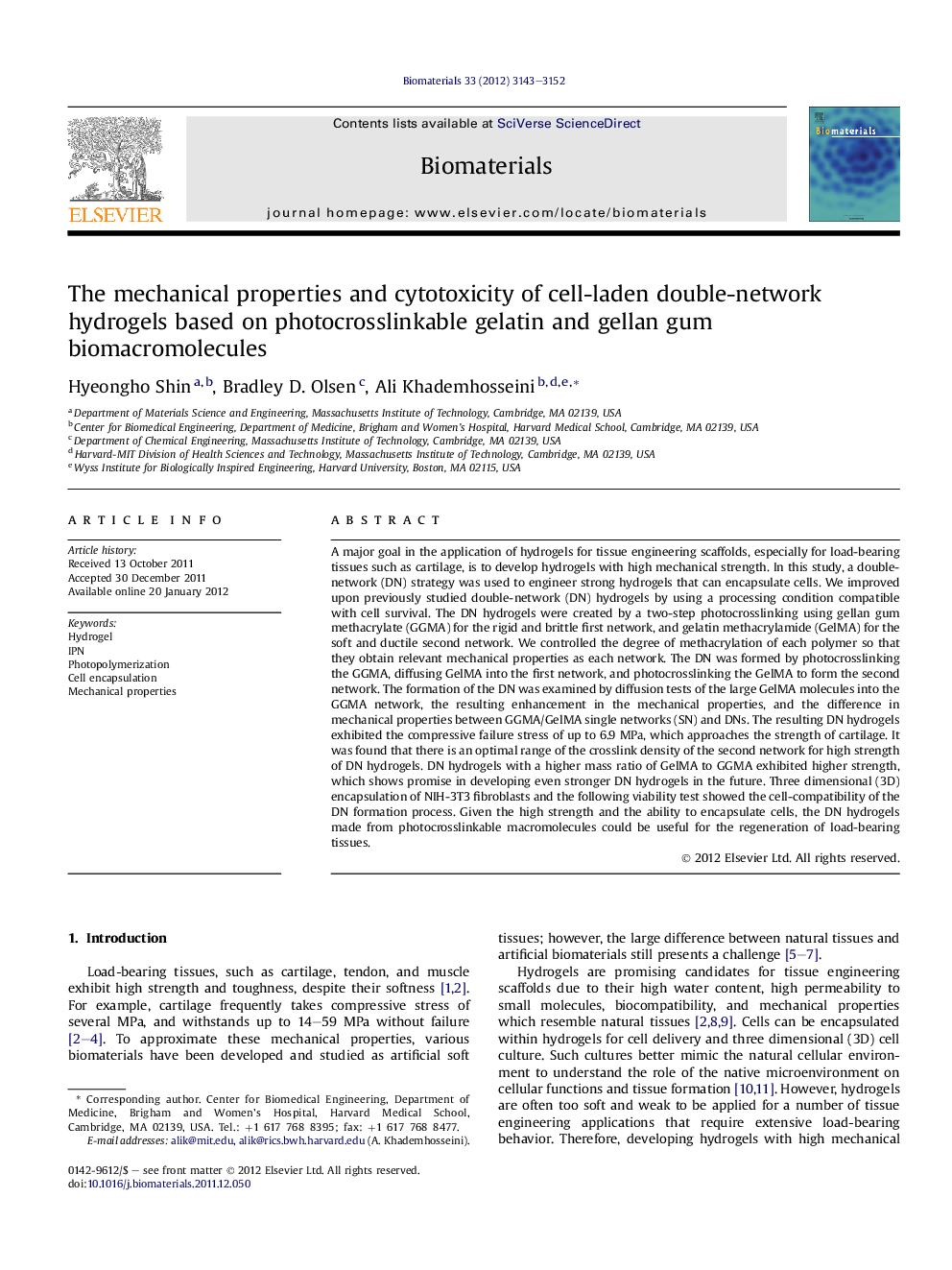| کد مقاله | کد نشریه | سال انتشار | مقاله انگلیسی | نسخه تمام متن |
|---|---|---|---|---|
| 6962 | 526 | 2012 | 10 صفحه PDF | دانلود رایگان |

A major goal in the application of hydrogels for tissue engineering scaffolds, especially for load-bearing tissues such as cartilage, is to develop hydrogels with high mechanical strength. In this study, a double-network (DN) strategy was used to engineer strong hydrogels that can encapsulate cells. We improved upon previously studied double-network (DN) hydrogels by using a processing condition compatible with cell survival. The DN hydrogels were created by a two-step photocrosslinking using gellan gum methacrylate (GGMA) for the rigid and brittle first network, and gelatin methacrylamide (GelMA) for the soft and ductile second network. We controlled the degree of methacrylation of each polymer so that they obtain relevant mechanical properties as each network. The DN was formed by photocrosslinking the GGMA, diffusing GelMA into the first network, and photocrosslinking the GelMA to form the second network. The formation of the DN was examined by diffusion tests of the large GelMA molecules into the GGMA network, the resulting enhancement in the mechanical properties, and the difference in mechanical properties between GGMA/GelMA single networks (SN) and DNs. The resulting DN hydrogels exhibited the compressive failure stress of up to 6.9 MPa, which approaches the strength of cartilage. It was found that there is an optimal range of the crosslink density of the second network for high strength of DN hydrogels. DN hydrogels with a higher mass ratio of GelMA to GGMA exhibited higher strength, which shows promise in developing even stronger DN hydrogels in the future. Three dimensional (3D) encapsulation of NIH-3T3 fibroblasts and the following viability test showed the cell-compatibility of the DN formation process. Given the high strength and the ability to encapsulate cells, the DN hydrogels made from photocrosslinkable macromolecules could be useful for the regeneration of load-bearing tissues.
Journal: Biomaterials - Volume 33, Issue 11, April 2012, Pages 3143–3152